Posted by: Ken @ 1:58 pm
The boardwalk at Chapel Trail Nature Center: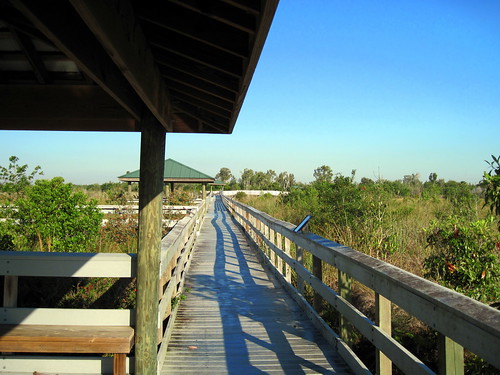
Nearly all our birding is done in “patches,” places that are within a five minute walk or drive from our home. In Florida, they include portions of the Broward County Water Conservation Area adjacent to our subdivision (which we call the West Miramar ESL, for “Environmentally Sensitive Area”), and two nearby parks managed by the City of Pembroke Pines: Chapel Trail Nature Center and West Pines Soccer Park and Nature Preserve. In Illinois, our favorites are Dick Young/Nelson Lake Kane County Forest Preserve, and Jones Meadow and Hawk’s Bluff Parks, managed by the Batavia Park District.
Of course, visiting these accessible habitats doesn’t waste driving time and money. The best times to be out birding are usually at the height of rush hour traffic delays. While this habit of staying close to home may be eco-friendly, we do not do this just to save the planet.
An uncommon migrant, this Solitary Sandpiper forages in a roadside ditch near our home. Its long wings, designed for long-distance migration, extend well past its short tail:
Visiting the same places day after day is not an efficient way to check off rarities, although a rare bird may show up just because you increased your odds of seeing it by being there so often. However, it does help put you in tune with the cycles of nature, as you see the subtle changes that may be missed by more casual visitors. As a kid in New Jersey during the 1940s, I remember the sound of the first Spring Peepers and the smell of Skunk Cabbage– and smelling the musk of hundreds of Garter Snakes as they emerged from hibernation, and the perfume of Citronella Ants as they swarmed in mid-summer. These ants tend aphids and “milk” them for the honeydew they produce. Thinking they must therefore be very sweet, my cousin and I tasted the ants and found them to be quite bitter! Back then, seeing the first robin was a great event, although now the species has extended its winter range northward and it is not unusual to see flocks all year.
A Northern Cardinal wants his picture taken– who can refuse?
Another advantage of making repeated visits to the same patch of wild land is that you learn to ignore so many “false alarms:” the broken branch that looks like a Great Horned Owl, the bear-shaped boulder, and the snake-like root that gave you a scare the first time you almost stepped on it– all may be conveniently ignored.
Something different — an American Bittern stands out among the familiar reeds at Chapel Trail Nature Center:
The bittern takes flight:
This morning, we watched the behavior of a Great Egret, a Wood Stork and a Double-crested Cormorant as the threesome fished together along the shore of our lake. The stork, which feeds by blind touch, benefited from fish that were driven near shore by the cormorant, and the egret shared the table and probably shooed some prey out to the cormorant:
When I was a kid, my bird books called them “Red-eyed Towhees,” but this Eastern Towhee at Chapel Trail has straw-colored eyes, characteristic of the race in Florida and southern Georgia:
I have also seen the northern red-eyed variety as a migrant in South Florida. Here is an example of one with intermediate eye color, in the West Miramar ESL:
For comparison, here is the northern red-eyed race I photographed in Illinois:
Only a few blocks from home, these Black Vultures assemble in dinner dress uniforms to feast on a road-killed Opossum: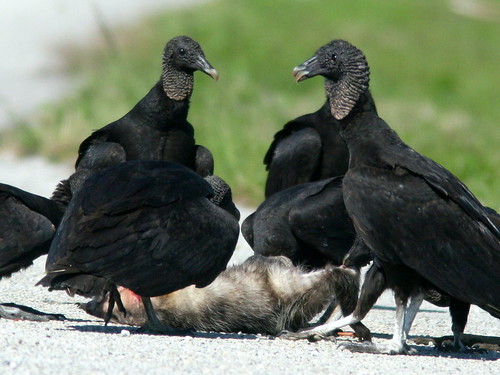
A Prairie Warbler brightens up the morning walk:
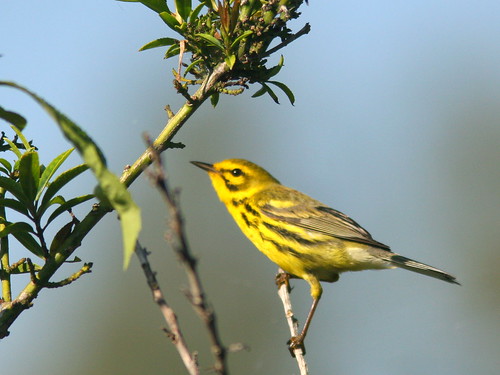
.
A male Common Yellowthroat is a difficult subject as it lurks in the shrubbery next to the boardwalk at Chapel Trail:
The yellowthroat’s somber mate perches in the reeds:
Back-lit by the morning sun, an Anhinga captures the rays to dry its feathers:
Like an emblem dominating a boulder at a lake in our local wetland, a cormorant does the same:
We notice that Blue Jays in South Florida commonly mimic the calls of Red-shouldered Hawks, a sound I never heard in New Jersey, when this Hawk was rarely seen (or heard) that far north.
A jay gathers nesting material in a neighbor’s palm tree:
This brace of Mottled Ducks provide a great photo-op by flying towards me. The female, in foreground, has an orange bill, while the male’s is more yellow:
Deer are not as common near our Florida home as they are up north, so seeing this half-grown Whitetail fawn is a treat:
A fresh Bobcat track reminds us of the wildness of this place, only a block from our home:













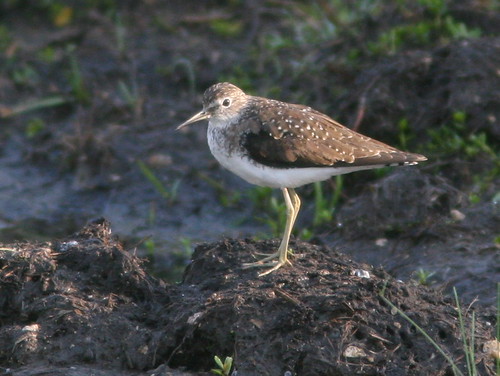

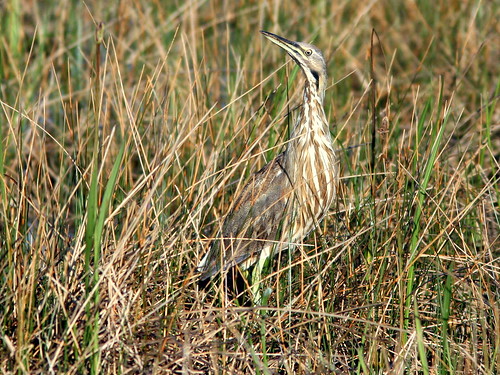
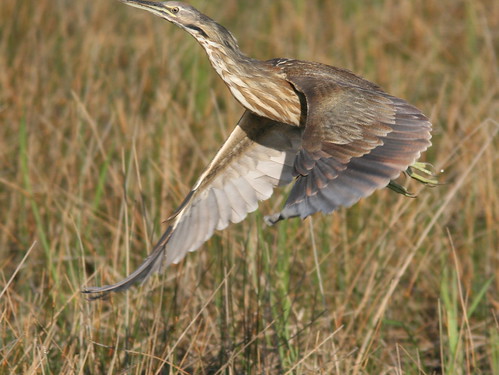
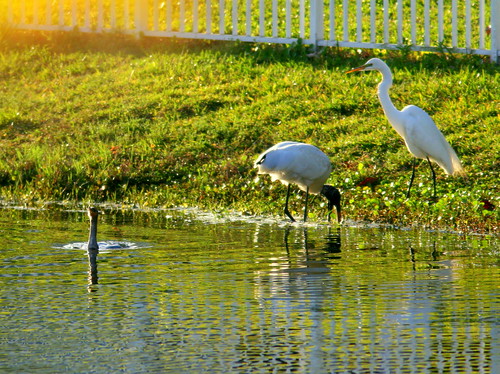
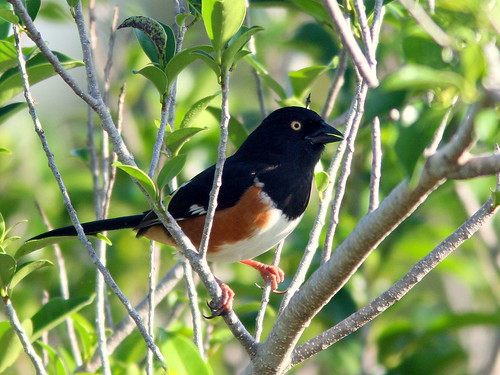
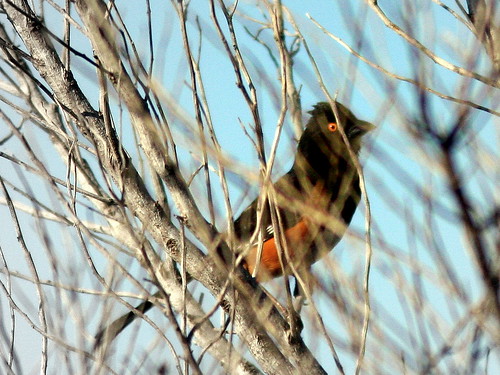
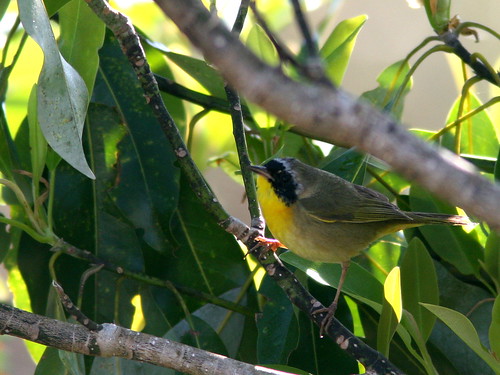

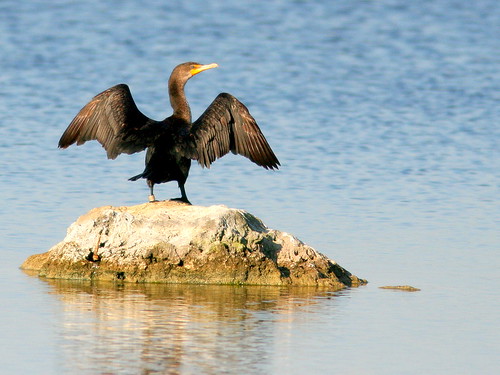
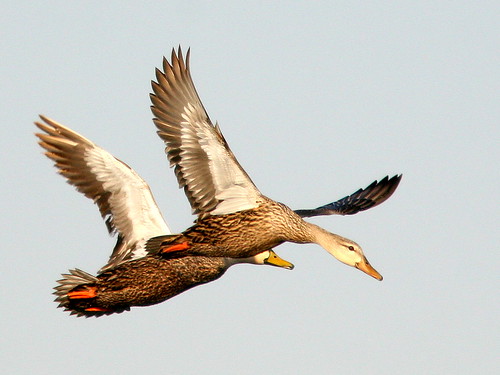
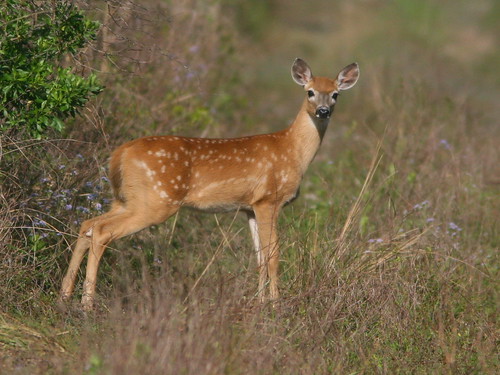
April 6th, 2010 at 12:06 pm LOVE the shot of the anhinga! Well captured!
April 10th, 2010 at 12:36 pm Beautiful shots, as always! The cardinal did look like he was posing!